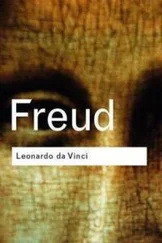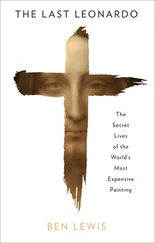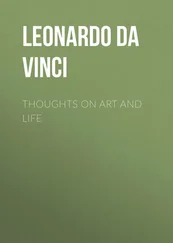Leonardo da Vinci - The Notebooks of Leonardo Da Vinci. Complete
Здесь есть возможность читать онлайн «Leonardo da Vinci - The Notebooks of Leonardo Da Vinci. Complete» — ознакомительный отрывок электронной книги совершенно бесплатно, а после прочтения отрывка купить полную версию. В некоторых случаях можно слушать аудио, скачать через торрент в формате fb2 и присутствует краткое содержание. Жанр: foreign_prose, foreign_home, visual_arts, foreign_antique, на английском языке. Описание произведения, (предисловие) а так же отзывы посетителей доступны на портале библиотеки ЛибКат.
- Название:The Notebooks of Leonardo Da Vinci. Complete
- Автор:
- Жанр:
- Год:неизвестен
- ISBN:нет данных
- Рейтинг книги:3 / 5. Голосов: 1
-
Избранное:Добавить в избранное
- Отзывы:
-
Ваша оценка:
- 60
- 1
- 2
- 3
- 4
- 5
The Notebooks of Leonardo Da Vinci. Complete: краткое содержание, описание и аннотация
Предлагаем к чтению аннотацию, описание, краткое содержание или предисловие (зависит от того, что написал сам автор книги «The Notebooks of Leonardo Da Vinci. Complete»). Если вы не нашли необходимую информацию о книге — напишите в комментариях, мы постараемся отыскать её.
The Notebooks of Leonardo Da Vinci. Complete — читать онлайн ознакомительный отрывок
Ниже представлен текст книги, разбитый по страницам. Система сохранения места последней прочитанной страницы, позволяет с удобством читать онлайн бесплатно книгу «The Notebooks of Leonardo Da Vinci. Complete», без необходимости каждый раз заново искать на чём Вы остановились. Поставьте закладку, и сможете в любой момент перейти на страницу, на которой закончили чтение.
Интервал:
Закладка:
Among opaque objects of equal size the apparent diminution of size will be in proportion to their distance from the eye of the spectator; but it is an inverse proportion, since, where the distance is greater, the opaque body will appear smaller, and the less the distance the larger will the object appear. And this is the fundamental principle of linear perspective and it follows:—[11]every object as it becomes more remote loses first those parts which are smallest. Thus of a horse, we should lose the legs before the head, because the legs are thinner than the head; and the neck before the body for the same reason. Hence it follows that the last part of the horse which would be discernible by the eye would be the mass of the body in an oval form, or rather in a cylindrical form and this would lose its apparent thickness before its length—according to the 2nd rule given above, &c. [Footnote 23: Compare line 11.].
If the eye remains stationary the perspective terminates in the distance in a point. But if the eye moves in a straight [horizontal] line the perspective terminates in a line and the reason is that this line is generated by the motion of the point and our sight; therefore it follows that as we move our sight [eye], the point moves, and as we move the point, the line is generated, &c.
An illustration by experiment.
224
Every visible body, in so far as it affects the eye, includes three attributes; that is to say: mass, form and colour; and the mass is recognisable at a greater distance from the place of its actual existence than either colour or form. Again, colour is discernible at a greater distance than form, but this law does not apply to luminous bodies.
The above proposition is plainly shown and proved by experiment; because: if you see a man close to you, you discern the exact appearance of the mass and of the form and also of the colouring; if he goes to some distance you will not recognise who he is, because the character of the details will disappear, if he goes still farther you will not be able to distinguish his colouring, but he will appear as a dark object, and still farther he will appear as a very small dark rounded object. It appears rounded because distance so greatly diminishes the various details that nothing remains visible but the larger mass. And the reason is this: We know very well that all the images of objects reach the senses by a small aperture in the eye; hence, if the whole horizon a d is admitted through such an aperture, the object b c being but a very small fraction of this horizon what space can it fill in that minute image of so vast a hemisphere? And because luminous bodies have more power in darkness than any others, it is evident that, as the chamber of the eye is very dark, as is the nature of all colored cavities, the images of distant objects are confused and lost in the great light of the sky; and if they are visible at all, appear dark and black, as every small body must when seen in the diffused light of the atmosphere.
[Footnote: The diagram belonging to this passage is placed between lines 5 and 6; it is No. 4 on Pl. VI. ]
A guiding rule.
225
OF THE ATMOSPHERE THAT INTERPOSES BETWEEN THE EYE AND VISIBLE OBJECTS.
An object will appear more or less distinct at the same distance, in proportion as the atmosphere existing between the eye and that object is more or less clear. Hence, as I know that the greater or less quantity of the air that lies between the eye and the object makes the outlines of that object more or less indistinct, you must diminish the definiteness of outline of those objects in proportion to their increasing distance from the eye of the spectator.
An experiment.
226
When I was once in a place on the sea, at an equal distance from the shore and the mountains, the distance from the shore looked much greater than that from the mountains.
On indistinctness at short distances (227-231).
227
If you place an opaque object in front of your eye at a distance of four fingers' breadth, if it is smaller than the space between the two eyes it will not interfere with your seeing any thing that may be beyond it. No object situated beyond another object seen by the eye can be concealed by this [nearer] object if it is smaller than the space from eye to eye.
228
The eye cannot take in a luminous angle which is too close to it.
229
That part of a surface will be better lighted on which the light falls at the greater angle. And that part, on which the shadow falls at the greatest angle, will receive from those rays least of the benefit of the light.
230
OF THE EYE.
The edges of an object placed in front of the pupil of the eye will be less distinct in proportion as they are closer to the eye. This is shown by the edge of the object n placed in front of the pupil d ; in looking at this edge the pupil also sees all the space a c which is beyond the edge; and the images the eye receives from that space are mingled with the images of the edge, so that one image confuses the other, and this confusion hinders the pupil from distinguishing the edge.
231
The outlines of objects will be least clear when they are nearest to the eye, and therefore remoter outlines will be clearer. Among objects which are smaller than the pupil of the eye those will be less distinct which are nearer to the eye.
On indistinctness at great distances (232-234).
232
Objects near to the eye will appear larger than those at a distance.
Objects seen with two eyes will appear rounder than if they are seen with only one.
Objects seen between light and shadow will show the most relief.
233
OF PAINTING.
Our true perception of an object diminishes in proportion as its size is diminished by distance.
234
PERSPECTIVE.
Why objects seen at a distance appear large to the eye and in the image on the vertical plane they appear small.
PERSPECTIVE.
I ask how far away the eye can discern a non-luminous body, as, for instance, a mountain. It will be very plainly visible if the sun is behind it; and could be seen at a greater or less distance according to the sun's place in the sky.
[Footnote: The clue to the solution of this problem (lines 1-3) is given in lines 4-6, No. 232. Objects seen with both eyes appear solid since they are seen from two distinct points of sight separated by the distance between the eyes, but this solidity cannot be represented in a flat drawing. Compare No. 535.]
The importance of light and shade in the perspective of disappearance (235-239).
235
An opaque body seen in a line in which the light falls will reveal no prominences to the eye. For instance, let a be the solid body and c the light; c m and c n will be the lines of incidence of the light, that is to say the lines which transmit the light to the object a . The eye being at the point b , I say that since the light c falls on the whole part m n the portions in relief on that side will all be illuminated. Hence the eye placed at c cannot see any light and shade and, not seeing it, every portion will appear of the same tone, therefore the relief in the prominent or rounded parts will not be visible.
236
OF PAINTING.
When you represent in your work shadows which you can only discern with difficulty, and of which you cannot distinguish the edges so that you apprehend them confusedly, you must not make them sharp or definite lest your work should have a wooden effect.
Читать дальшеИнтервал:
Закладка:
Похожие книги на «The Notebooks of Leonardo Da Vinci. Complete»
Представляем Вашему вниманию похожие книги на «The Notebooks of Leonardo Da Vinci. Complete» списком для выбора. Мы отобрали схожую по названию и смыслу литературу в надежде предоставить читателям больше вариантов отыскать новые, интересные, ещё непрочитанные произведения.
Обсуждение, отзывы о книге «The Notebooks of Leonardo Da Vinci. Complete» и просто собственные мнения читателей. Оставьте ваши комментарии, напишите, что Вы думаете о произведении, его смысле или главных героях. Укажите что конкретно понравилось, а что нет, и почему Вы так считаете.












